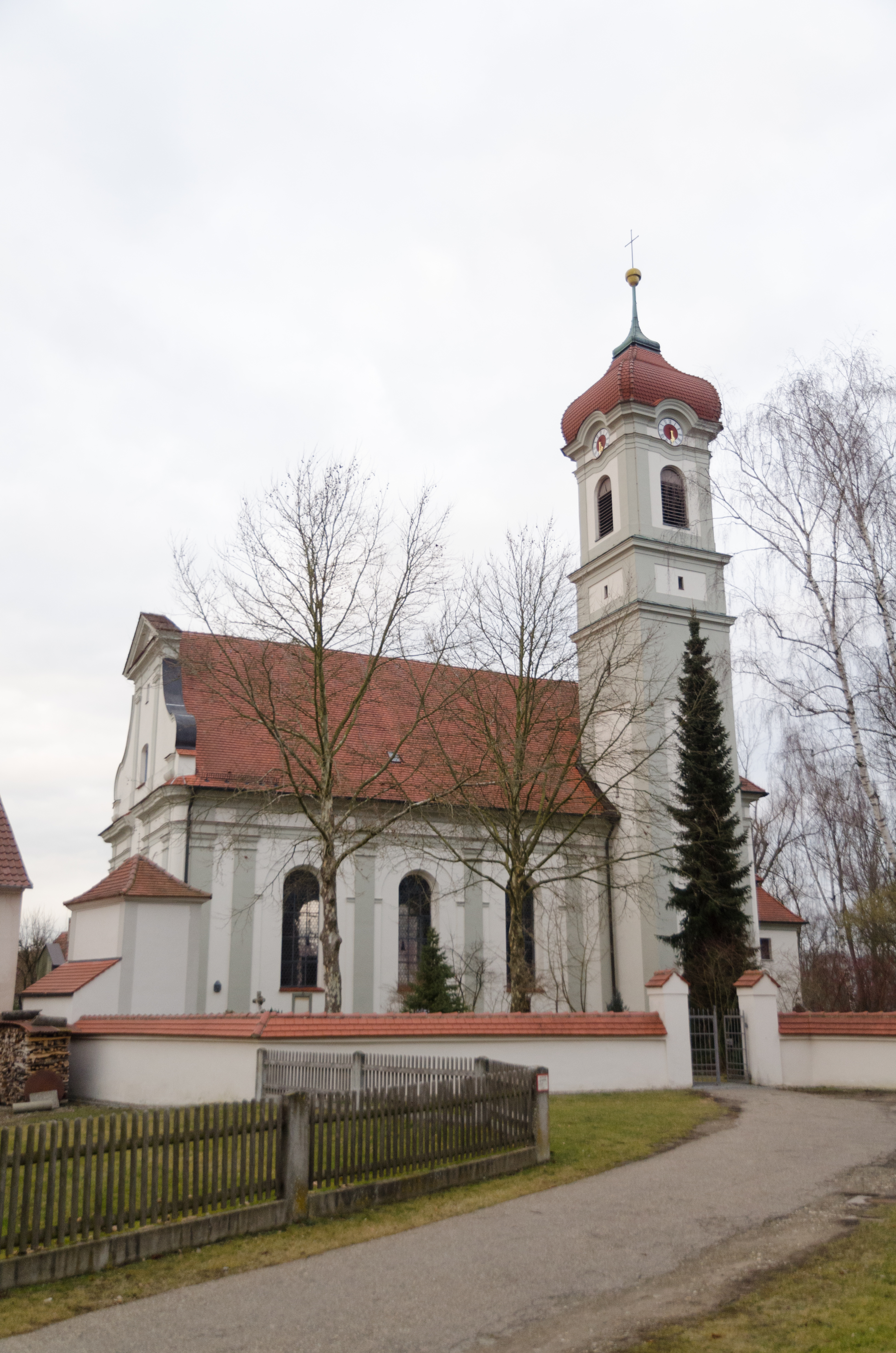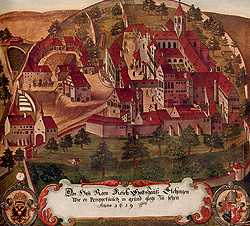|
Nersingen
Nersingen is a municipality in the District of Neu-Ulm in Bavaria, Germany. The neighbours are Neu-Ulm, Elchingen, Bibertal and Pfaffenhofen an der Roth. Geography Geographic location Through the area of Nersingen flow three rivers: The Danube in the north and her both supply rivers Roth and Leibi, which cross Nersingen from south to north. Also, there are some water ditches and some excavator lakes, which resulted from gravel quarrying. The most part of Nersingen is on the gravellic ground. Municipality arrangement The municipality of Nersingen consists of the principal village of Nersingen and the part villages Straß, Leibi, Unterfahlheim, and Oberfahlheim. Economics and infrastructure Companies Hilti AG in Straß Traffic Nersingen lies next to the Bundesautobahn 7 and the train line Ulm - Munich Munich ( ; german: München ; bar, Minga ) is the capital and most populous city of the States of Germany, German state of Bavaria. With a population of 1,558,395 i ... [...More Info...] [...Related Items...] OR: [Wikipedia] [Google] [Baidu] |
Pfaffenhofen An Der Roth
Pfaffenhofen an der Roth is a municipality in the district of Neu-Ulm in Bavaria in Germany. Its most famous son is Hermann Köhl, an aviation pioneer of the 1920s. Geography Pfaffenhofen lies along the river Roth. The village of Pfaffenhofen proper lies on the west bank of the river, and is surrounded to the North, East and South by farms and wooded areas. Other villages within Pfaffenhofen and der Roth are dispersed throughout the municipality, with farms and wooded areas in between. Neighbouring municipalities * Neu-Ulm and Holzheim to the west * Nersingen to the north * Bibertal to the east * Weißenhorn to the south Municipality parts The following localities lie within Pfaffenhofen: Diepertshofen, Erbishofen, Volkertshofen, Beuren, Balmertshofen, Biberberg, Niederhausen, Roth, Berg, Remmeltshofen, Kadeltshofen, Raunertshofen, Hirbishofen and Luippen. Historical Overview 12th Century - There is mention of Pfaffenhoffen's castle, on the right bank of the Roth river. 130 ... [...More Info...] [...Related Items...] OR: [Wikipedia] [Google] [Baidu] |
Neu-Ulm
Neu-Ulm ( Swabian: ''Nej-Ulm'') is the capital of the Neu-Ulm district and a town in Swabia, Bavaria. Neighbouring towns include Ulm, Senden, Pfaffenhofen an der Roth, Holzheim, Nersingen and Elchingen. The population is 58,978 (31 December 2019). History The modern history of Neu-Ulm began with the change of the sovereignty over the city of Ulm in 1810 from the Kingdom of Bavaria to the Kingdom of Württemberg. The Danube became the boundary between Bavaria and Württemberg. Land on the right bank of the Danube thus remained under Bavarian sovereignty. This was the beginning of Neu-Ulm's status as an independent town. At this time Neu-Ulm was very small with little more than a few houses, taverns, pieces of land, and the village of Offenhausen. It was still known as (Ulm on the right-hand side of the Danube). The name "Neu-Ulm" was first mentioned in records in 1814. The town's real growth began a few decades later in 1841, when the announced the building of the Federal For ... [...More Info...] [...Related Items...] OR: [Wikipedia] [Google] [Baidu] |
Neu-Ulm (district)
Neu-Ulm is a ''Landkreis'' (district) in Swabia, Bavaria, Germany. It is bounded by (from the east and clockwise) the districts of Günzburg and Unterallgäu and the state of Baden-Württemberg (districts Biberach and Alb-Donau, city of Ulm). The district was established in 1972 by merging the former districts of Neu-Ulm and Illertissen with the previously district-free city of Neu-Ulm. The district includes the eastern metropolitan area of the city of Ulm. The Danube and its tributary, the Iller The Iller (; ancient name Ilargus) is a river of Bavaria and Baden-Württemberg in Germany. It is a right tributary of the Danube, long. It is formed at the confluence of the rivers Breitach, Stillach and Trettach near Oberstdorf in the Allgäu ..., form the western border of the district. Coat of arms The coat of arms displays: * the moor from the arms of Kirchberg * the horn from the arms of Neuffen Towns and municipalities References External links * (German) ... [...More Info...] [...Related Items...] OR: [Wikipedia] [Google] [Baidu] |
Leibi
The Leibi is a tributary of the Danube in the district of Neu-Ulm, Bavaria, Germany. The source of the Leibi is in the west of an industrial area in Weißenhorn. The river is 23.1 km long. At first the Leibi crosses the industrial area from South to North and the fields north of it. Then the river briefly turns west along a forest area. After that it flows again to north, past the hamlet Hirbishofen (a part of Pfaffenhofen an der Roth), Holzheim and Steinheim (part of the city of Neu-Ulm). Afterwards the Leibi flows twice under the Bundesautobahn 7 and changes its way to northeast. The river traverses a part of Nersingen also named Leibi and flows finally, after a few hundred meters through the forest ''Auwald'', into the Danube. See also *List of rivers of Bavaria A list of rivers of Bavaria, Germany: A * Aalbach *Abens * Ach * Afferbach * Affinger Bach * Ailsbach *Aisch * Aiterach *Alpbach *Alster * Altmühl *Alz * Amper * Anlauter * Arbach * Arbachgraben *Aschaff * As ... [...More Info...] [...Related Items...] OR: [Wikipedia] [Google] [Baidu] |
Saint Dionysius
Pope Dionysius was the bishop of Rome from 22 July 259 to his death on 26 December 268. His task was to reorganize the Roman church, after the persecutions of Emperor Valerian I and the edict of toleration by his successor Gallienus. He also helped rebuild the churches of Cappadocia, devastated by the marauding Goths. Pontificate Dionysius may have been born in Magna Græcia, but this has not been verified. He was elected pope in 259, after the martyrdom of Sixtus II in 258. The Holy See had been vacant for nearly a year due to difficulty in electing a new pope during the violent persecution which Christians faced. When the persecution had begun to subside, Dionysius was raised to the office of Bishop of Rome. Emperor Valerian I, who had led the persecution, was captured and killed by the King of Persia in 260.Kirsch, Johann Peter (1909). "Pope St. Dionysius" in ''The Catholic Encyclopedia''. Vol. 5. New York: Robert Appleton Company. The new emperor, Gallienus, issued an edict ... [...More Info...] [...Related Items...] OR: [Wikipedia] [Google] [Baidu] |
Ortsteil
A village is a clustered human settlement or Residential community, community, larger than a hamlet (place), hamlet but smaller than a town (although the word is often used to describe both hamlets and smaller towns), with a population typically ranging from a few hundred to a few thousand. Though villages are often located in rural areas, the term urban village is also applied to certain urban neighborhoods. Villages are normally permanent, with fixed dwellings; however, transient villages can occur. Further, the dwellings of a village are fairly close to one another, not scattered broadly over the landscape, as a dispersed settlement. In the past, villages were a usual form of community for societies that practice subsistence agriculture, and also for some non-agricultural societies. In Great Britain, a hamlet earned the right to be called a village when it built a Church (building), church. [...More Info...] [...Related Items...] OR: [Wikipedia] [Google] [Baidu] |
Bayerisches Landesamt Für Statistik
The statistical offices of the German states (German language, German: ''Statistische Landesämter'') carry out the task of collecting official statistics in Germany together and in cooperation with the Federal Statistical Office of Germany, Federal Statistical Office. The implementation of statistics according to Article 83 of the Basic Law for the Federal Republic of Germany, constitution is executed at state level. The Bundestag, federal government has, under Article 73 (1) 11. of the constitution, the exclusive legislation for the "statistics for federal purposes." There are 14 statistical offices for the States of Germany, 16 states: See also * Federal Statistical Office of Germany References {{Reflist National statistical services, Germany Lists of organisations based in Germany, Statistical offices Official statistics, Germany ... [...More Info...] [...Related Items...] OR: [Wikipedia] [Google] [Baidu] |
Municipality
A municipality is usually a single administrative division having corporate status and powers of self-government or jurisdiction as granted by national and regional laws to which it is subordinate. The term ''municipality'' may also mean the governing body of a given municipality. A municipality is a general-purpose administrative subdivision, as opposed to a special-purpose district. The term is derived from French and Latin . The English word ''municipality'' derives from the Latin social contract (derived from a word meaning "duty holders"), referring to the Latin communities that supplied Rome with troops in exchange for their own incorporation into the Roman state (granting Roman citizenship to the inhabitants) while permitting the communities to retain their own local governments (a limited autonomy). A municipality can be any political jurisdiction, from a sovereign state such as the Principality of Monaco, to a small village such as West Hampton Dunes, New York. Th ... [...More Info...] [...Related Items...] OR: [Wikipedia] [Google] [Baidu] |
Elchingen
Elchingen is a municipality about 7 km east of Ulm–Neu-Ulm in the district of Neu-Ulm in Bavaria, Germany. Municipality parts: * Thalfingen: 4 211 residents, 8.83 km² * Oberelchingen: 3 024 residents, 7.31 km² * Unterelchingen: 2 863 residents, 8.76 km² History In 1294, Elchingen (today: Unterelchingen) was sold by Konrad of Plochingen to the Cistercian monastery of Salem. Unterelchingen stayed in its property until the secularization in 1802. Unterelchingen never was in possession of the Monastery of Elchingen. In 1803, Ober-, Unter-elchingen and Thalfingen became Bavarian, due to the Principal Decree of the Imperial Deputation. The Benedictine monastery of Elchingen was founded at the beginning of the 12th century. In 1395 all authentic documents were destroyed in a fire. So the probable consecration date (15 August 1128) cannot be proven. Around 1500, the German Conquistador Ambrosius Ehinger was born there. He later went on to be ... [...More Info...] [...Related Items...] OR: [Wikipedia] [Google] [Baidu] |
Bibertal
Bibertal is a municipality in the district of Günzburg in Bavaria in Germany Germany,, officially the Federal Republic of Germany, is a country in Central Europe. It is the second most populous country in Europe after Russia, and the most populous member state of the European Union. Germany is situated betwe .... References External linksOfficial site Populated places in Günzburg (district) {{Günzburgdistrict-geo-stub ... [...More Info...] [...Related Items...] OR: [Wikipedia] [Google] [Baidu] |
Danube
The Danube ( ; ) is a river that was once a long-standing frontier of the Roman Empire and today connects 10 European countries, running through their territories or being a border. Originating in Germany, the Danube flows southeast for , passing through or bordering Austria, Slovakia, Hungary, Croatia, Serbia, Romania, Bulgaria, Moldova, and Ukraine before draining into the Black Sea. Its drainage basin extends into nine more countries. The largest cities on the river are Vienna, Budapest, Belgrade and Bratislava, all of which are the capitals of their respective countries; the Danube passes through four capital cities, more than any other river in the world. Five more capital cities lie in the Danube's basin: Bucharest, Sofia, Zagreb, Ljubljana and Sarajevo. The fourth-largest city in its basin is Munich, the capital of Bavaria, standing on the Isar River. The Danube is the second-longest river in Europe, after the Volga in Russia. It flows through much of Central and Sou ... [...More Info...] [...Related Items...] OR: [Wikipedia] [Google] [Baidu] |




